|
|
![]()
FOREST HEALTH - SOFTWOOD DEFOLIATORS
Defoliators eat the needles of trees, their infestation sometimes reaching epidemic proportions. Historically, these widespread epidemics have been recorded. Fortunately, epidemics are usually cyclic and the insect boom will collapse through starvation or other natural checks and balances before the forest is irreversibly damaged. Due to changes in the landscape and with better forest management, these epidemics have diminished. Presence of these insects can easily be detected by the loss of needles during the growing season. Resulting loss of the tree’s food manufacturing ability causes a slowing of timber growth. Conifers can be quickly killed, or lose their form if intended as Christmas trees. Stressed conifers can lead to mortality from bark beetle infestations. Many of these species are moths and wasps. Red text indicates an exotic pest.
| Jack Pine Budworm Larch Casebearer Needle Galls |
Sawflies Spruce Budworm Tussock Moths |
|
Jack pine budworm (Choristoneura pinus), moth/butterfly order: cyclical in jack pine, prefers older stands, prefers trees with lots of male flowers, can cause widespread mortality, leaves stand more vulnerable to wildfire |
||
| Hosts: jack pine | ||
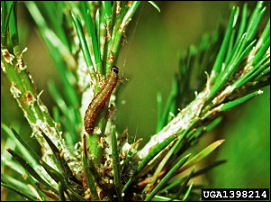 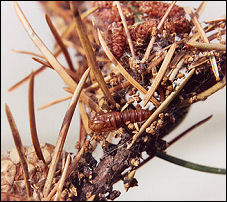 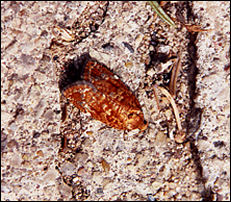 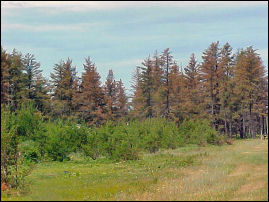 |
||
Larch casebearer (Coleophora laricella), moth/butterfly order: forms small linear cases attached to twigs and needles, larvae suspended from single silky threads, causes tamaracks to 'brown-out'during spring and summer, otherwise healthy trees can survive one or two seasons of defoliation, introduced in 1886 |
||
| Hosts: tamarack, larch | ||
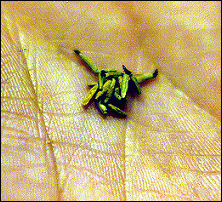 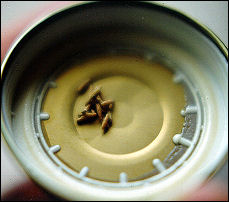 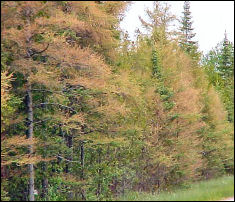 |
||
Needle galls, true bugs and mites: causes spiny growths on twig ends or lumps inside needles, typically not a health issue but causes loss of visual quality |
||
| Hosts: usually spruces, especially Colorado blue spruce | ||
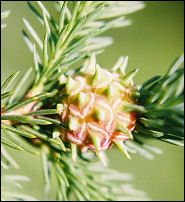 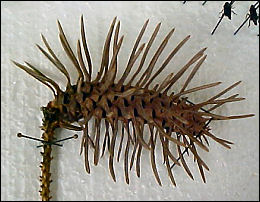 |
||
Sawflies (Diprion spp., Neodiprion spp., et al.), wasp order: a widespread group of at least 22 species - often mistaken as caterpillars (which are moth/butterfly larvae), larvae often arch their backs when disturbed, usually occur in colonies, different spring and fall species, some species are exotic |
||
| Hosts: usually pines (Pinus spp.) | ||
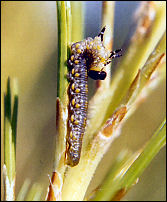 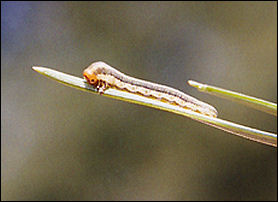 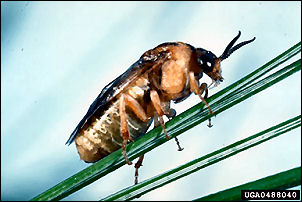 |
||
Spruce budworm (Choristoneura fumiferana): historically cyclic and very destructive, now sporadic/somewhat local due to landscape changes and forest management, capable of widespread mortality, hatchlings mine flower buds and older needles, older larvae prefer new needles |
||
| Hosts: true firs (Abies) and spruces (Picea) | ||
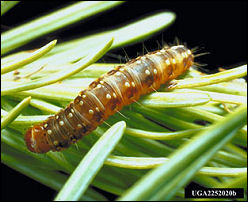 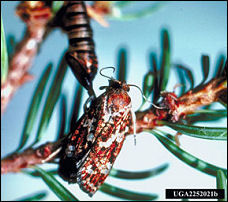 |
||
Tussock moths (several families, genera, species), moth/butterfly order: larvae have distinctive tufts of hairs, often quite colorful, pine tussock moth (Dasychira pinicola) is an important defoliator of pines and white spruce |
||
| Hosts: most conifers | ||
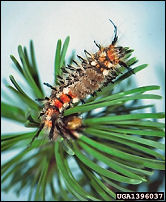 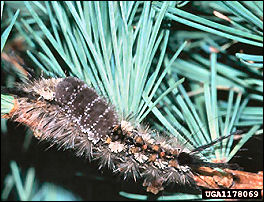 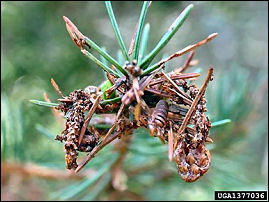 |
||
|
||
Image Citations
Jack Pine Budworm - Steven Katovich, USDA Forest Service, Bugwood.org
Sawlfies (3) - John H. Ghent, USDA Forest Service, Bugwood.org
Spruce Budworm (1, 2) - Jerald E. Dewey, USDA Forest Service, Bugwood.org
Spruce Budworm (3) - Joseph O'Brien, USDA Forest Service, Bugwood.org
Tussock Moths (2) - USDA Forest Service, Bugwood.org
Tussock Moths (2) - Connecticut Agricultural Experiment Station, Bugwood.org
All others - Bill Cook, Michigan State University Extension
Click HERE
to return to the U.P. Tree ID home page.
Click HERE to return to the Forest Health home page..
This site created and maintained by Bill Cook, MSU Extension Forester for the Upper Peninsula of Michigan. Editing and modification is ongoing. Submit suggestions, questions, and corrections to cookwi@msu.edu or call 906-786-1575.